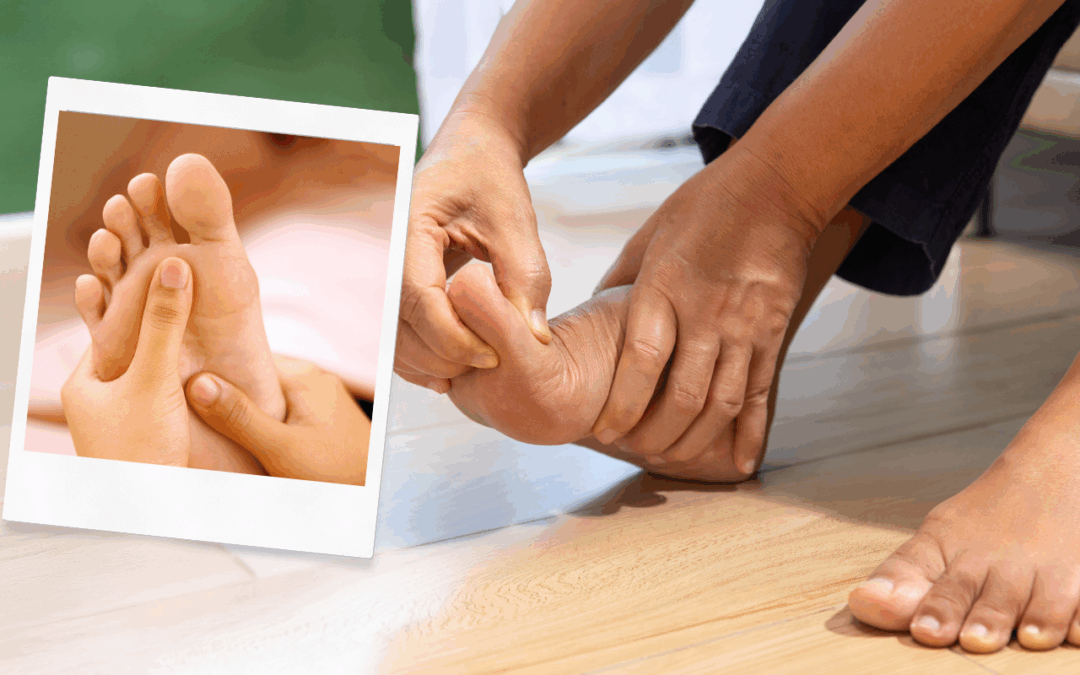When was the last time you really looked at your feet? Not just a quick glance while putting on socks or painting your toenails, but a proper check?
As podiatrists, we see feet every day, and we notice when something’s not quite right. But what about the time between your appointments? Your feet are often out of sight, and unfortunately, that means they can also be out of mind. Yet, they can give early clues about health problems that are much easier to treat when caught early.
Let’s talk about why checking your feet regularly could be one of the simplest but most important habits for your health.
Common Changes to Your Feet to Watch Out For
Not every change is cause for alarm, but it’s important to be aware of what’s normal for your feet – and what’s not. Here are some of the most common types of lesions or changes you might spot:
1. Corns and Calluses
Corns and Calluses are areas of thickened skin usually develop due to pressure or friction from footwear or walking style. While often harmless, if left untreated, they can become painful or even break down the skin, this is especially concerning for people with diabetes or poor circulation.
2. Verrucae (Plantar Warts)
Veruccae are caused by a virus and can appear as small, rough growths, often on the soles of your feet. They may have tiny black dots and can become painful when walking due to hard skin that builds up. Early treatment can help stop them from spreading and make your feet more comfortable. They can sometimes be mistaken for corns and vice versa, therefore it is always best to seek help if you are unsure in order to avoid spending your money of the wrong product.
3. Moles and Skin Changes
Most people don’t associate skin cancer with the feet. However, malignant melanoma can absolutely appear there, especially on the soles, between toes, or around the nail bed. New or changing moles should never be ignored.
It is extremely rare to develop new benign moles as adults. If you notice a new mole, or changes in size, shape, colour, or texture of an existing mole, it’s crucial to have it checked – not just by a podiatrist, but also by your GP or a dermatologist. Melanoma is the most serious type of skin cancer, and early detection can make all the difference.
How to Check Your Feet – A Simple Foot Check Routine
All you need is good lighting and a little time. Once a week, take a few minutes to inspect your feet. Here’s what to do:
✅ Check the tops, soles, and sides of your feet
✅ Look between your toes
✅ Use a mirror or ask someone to help check the soles if you are unable to reach these places
✅ Examine your toenails and around the nail beds
✅ Feel for any lumps, bumps, or sore spots
✅ Take clear photos if possible to monitor any changes
What to Look For When Checking Your Feet
When you examine your feet, these are the main things to look for:
- New or changing moles
- Cuts, blisters, or wounds that aren’t healing
- Thickened areas of skin (corns/callus)
- Warts or verrucae
- Any signs of smell, redness, swelling, or infection
- Anything that you think is unusual for your feet
Who Needs to Be Vigilant With Foot Health Checks
Everyone should check their feet regularly, but it’s especially important if you:
- Have diabetes
- Have reduced sensation or circulation in your feet (neuropathy)
- Have a personal or family history of skin cancer
- Frequently walk barefoot in public places (e.g. swimming pools or gyms)
- Wear tight or ill-fitting shoes
When to Seek Professional Advice About Your Feet
If you’re unsure about anything you’ve noticed, don’t wait. Whether it’s a suspicious mole, painful callus, or a verruca that won’t budge, at Cutting Edge Podiatry we’re here to help. Early intervention can prevent complications and keep you comfortable and mobile.
And if something looks unusual or you’re worried it might be something serious, we can refer you for further assessment if needed.
You can book online or call our friendly team on 01223 633 038. No referral needed.


